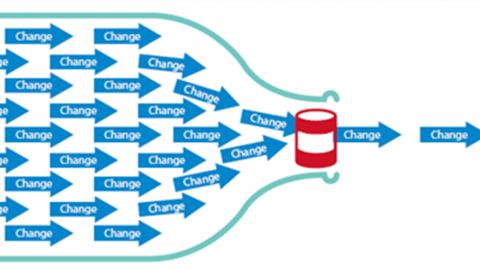
A process is a repeatable aspect of business operations that can be optimized to boost efficiency. In a manufacturing setting, keeping a high level of efficiency is especially crucial because doing so directly impacts total output, customer satisfaction and more. Making gains with process efficiency takes time and concentrated, ongoing effort. Here are six strategies you can use to improve process efficiency in your facility.
1. Dig Into Data and Use It to Illuminate Areas of Improvement
Not long ago, manufacturers that collected information about operations only had isolated data sets. Now, it’s possible to dig into data and see where existing processes break down or determine the conditions required for maximum efficiency.
In one case, a mining company used data to learn that the best performance occurred during peak oxygen levels in the mine. Then, the establishment altered its leach recovery process and increased the average yield by 3.7 percent in three months. Without looking at the data in depth, the company might not have known which aspects of its process to tweak to see such gains.
Getting started requires picking a problem that data analysis could solve, such as a process that’s continually cost-intensive. Next, all aspects of that process must be accurately measured. Finally, the last step is to look at the data and determine how to make improvements based on the findings.
For example, it may become clear that people go through too many unnecessary steps when tweaking a machine to make it perform different functions. In that case, the fix might involve improved employee training or investing in enhancements to the equipment that make it more versatile.
2. Take a Team Approach to Goal Achievement
When setting goals at a company, it’s smart to figure out where bottlenecks exist and assign a dollar value to them. There are various ways to identify bottlenecks. They include:
Finding the machine or the step that uses the highest percentage of its capacity. It is the bottleneck.
Locating the machine or the process that has the longest wait times. The previous machine is the bottleneck.
Determining areas of backlogged work. Tracing the source of backlogs identifies backlogs — which are caused by equipment as well as people.
Tackle the most expensive bottlenecks first. Then, task teams of employees with working toward goals that eliminate or reduce those problem areas.
Roll out the implemented changes gradually to avoid significant disruptions to the existing processes. Then, communicate with each team regularly to see if it’s getting closer to the intended goal or if it’s time to do things differently.
A team management method known as Command and Control gained popularity throughout the 20th century, but because it involved team leaders ordering employees to do things and punishing them if they refused, it contributed to low morale.
A more favorable team communication method is called Engage and Create. While using it, a team leader seeks input from team members and values their contributions. Additionally, all team members engage with other workers and understand everyone has a valuable role to play. A team management style called Interested Engagement also focuses on listening and responding to team feedback. It’s similar to Engage and Create because it also prioritizes working together.
If using a team management method such as Engage and Create, assigning milestones to groups through a project management app allows people to take ownership of tasks in ways they may not do individually.
Source: Robotiq